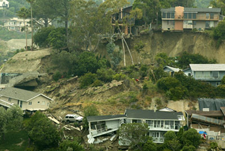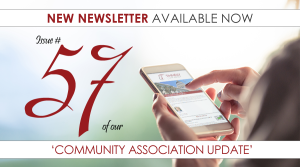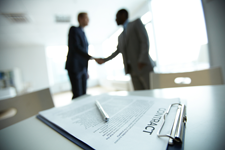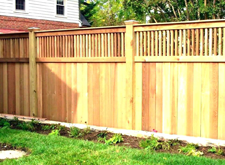 Southern California is known for the warm weather, relaxing atmosphere, and in certain cases, picturesque Homeowners Associations (HOA) situated high enough to see the ocean. However, what happens when those picture-perfect HOAs have a slope movement/failure? What should the Board of Directors (Board) do?
Southern California is known for the warm weather, relaxing atmosphere, and in certain cases, picturesque Homeowners Associations (HOA) situated high enough to see the ocean. However, what happens when those picture-perfect HOAs have a slope movement/failure? What should the Board of Directors (Board) do?
Slope Maintenance
Slopes within an HOA development are usually maintained by the HOAs via a maintenance agreement, by the Lighting and Landscape Assessment District (LLAD), or by the homeowners themselves. Slope maintenance involves management of sub-surface and above-surface areas.
Sub-surface maintenance will most likely involve vegetation root volume and irrigation system preservation, which is integral in supporting the slope structure itself. For steeper slopes, there might be a heavier support system built into the slope. Above-surface maintenance will most likely involve vegetation/brush preservation for aesthetical purposes and to prevent fire hazards, among other things.
The HOA’s management should routinely follow-up with the HOA’s landscape maintenance crew to monitor the slope, v-ditch (concrete channel usually at the bottom of a hill to collect drainage) and other drainage routes, and water pipelines. If maintained properly—barring extenuating circumstances—naturally occurring slope movement should be very minimal. It should be noted that there is always some sort of slope movement due to erosion and time. However, should abnormal slope movement/failure be noticed, the HOA’s management company and Board should and must be notified immediately.
Improvements on Slopes
The structural integrity of slopes is very complex. This means homeowners should consult with the HOA’s management and Architectural Committee before placing any improvements on or surrounding the slope as improperly engineered improvements may cause unwanted slope movement/failure.
Improvements may vary, but the most common ones are plants, fences, poles, pipes, decks, patios, and walkways. The Board should be aware of any improvements that change or interfere with the contour/drainage/support system of the slope. It would be prudent to require homeowners to submit an Architectural Application consisting of detailed improvement plans that have been vetted by a licensed geotechnical expert familiar with slopes. Furthermore, to cover all bases of liability, the Architectural Committee should retain its own geotechnical expert to analyze whether allowing said improvement(s) would be detrimental to the integrity of the slope. Such measures might cost a bit upfront, but compared to a major slope movement/failure, a geotechnical bill to analyze improvement plans would be inconsequential.
Board Action
An HOA’s Board will be called upon to act in the event of slope movement/failure. It is important for the Board to take immediate action as slope movement/failure can be detrimental to the physical wellbeing of everyone in the community and the homeowners’ properties involved. Additionally, immediate action will ensure that more data may be collected for the analyzation of the slope movement/failure. Here are a few things for the Board to consider:
- Note the approximate time of the slope movement/failure
- Catalog picture and video evidence of the slope movement/failure and any homeowners’ property damage
- Contact the HOA’s general counsel
- Create an executive committee to promptly handle all matters pertaining to the slope movement/failure
- Consult/retain a geotechnical expert as soon as possible
- Contact the HOA’s landscape maintenance crew regarding any potential broken irrigation pipelines and/or hazardous vegetation, if applicable (e.g., if there is a leak, the maintenance crew should try to perform temporary repairs/stoppage, or as advised by a geotechnical expert)
- Contact the HOA’s insurance carrier and tender claims as necessary (note that some HOA policies might have exclusions regarding earth movement/slope failure, but the HOA’s general counsel will be able to navigate those areas with the insurance representative)
- Involve the homeowners’ insurance carrier if they have property damage due to the slope movement/failure
- Prepare and have ready past HOA water irrigation reports, water invoices, landscape maintenance invoices…etc.
- Review the HOA’s budget and all/pending capital expenditures
- Consider winterizing the slopes if the slope movement/failure occurs before or during the rainy season
The following above is by no means an exhaustive list, but it is the bare minimum the Board should do in the event of a slope movement/failure. After the HOA’s counsel and geotechnical expert have been consulted, there would usually be four (4) phases to go through before the slope is back to its original condition: (1) preliminary above-surface investigations (i.e., measurements of movement/failure, noting any damages, reviewing HOA records…etc.); (2) sub-surface invasive investigations (i.e., digging, collecting soil samples, lab analyzation…etc.); (3) drawing building/repair plans and obtaining city approval; and (4) rebuilding/repairing the slope. The HOA should expect each phase to take a minimum of one (1) month if all parties—Board, homeowners, counsel, insurance carriers…etc.—cooperate. However, if parties are uncooperative, the phases can be delayed by months if not a year or more. Moreover, if there is slope movement/failure during the rainy season, the slope must be winterized (e.g., protected against further rainfall, water pooling) and rebuilding/repairs will likely not begin until the spring when the ground is a bit drier.
 |
The Board must keep in mind that should the slope movement/failure be extreme, the costs associated with determining the cause and rectifying any damages will be vast (~ $300K if not more). This is not taking into account any legal disputes between the parties as liability and responsibility for the slope movement/failure will not be clear until after phase 2 investigations. Therefore, if HOAs have a slope movement/failure, it is best to contact general counsel immediately! |
-Blog post authored by TLG Attorney, Vivian X. Tran, Esq.

 HOA Lawyer Blog
HOA Lawyer Blog


 Recent legislative changes under
Recent legislative changes under  *New Legislation
*New Legislation In case you missed it,
In case you missed it,  Asked – Our Board of Directors has been seeking to switch out a vendor for some time, but we have been waiting for the current contract to expire. It has become known that the current vendor contract automatically “renewed” for another 5-year period because we did not provide notice of our intent to terminate at least 90 days before the contract expired. This termination notice period was required under the terms of the agreement, but we were unaware of it until it was too late. Is there anything we can do to get out from under this contract?
Asked – Our Board of Directors has been seeking to switch out a vendor for some time, but we have been waiting for the current contract to expire. It has become known that the current vendor contract automatically “renewed” for another 5-year period because we did not provide notice of our intent to terminate at least 90 days before the contract expired. This termination notice period was required under the terms of the agreement, but we were unaware of it until it was too late. Is there anything we can do to get out from under this contract?  Southern California is known for the warm weather, relaxing atmosphere, and in certain cases, picturesque Homeowners Associations (HOA) situated high enough to see the ocean. However, what happens when those picture-perfect HOAs have a slope movement/failure? What should the Board of Directors (Board) do?
Southern California is known for the warm weather, relaxing atmosphere, and in certain cases, picturesque Homeowners Associations (HOA) situated high enough to see the ocean. However, what happens when those picture-perfect HOAs have a slope movement/failure? What should the Board of Directors (Board) do? Asked – Many owners in the community have requested that the board of directors consider removing an old, largely unused tennis court. We have three other tennis courts in the community and the space could be repurposed for a variety of other uses. Does the board have the authority to remove the tennis court?
Asked – Many owners in the community have requested that the board of directors consider removing an old, largely unused tennis court. We have three other tennis courts in the community and the space could be repurposed for a variety of other uses. Does the board have the authority to remove the tennis court? Asked – Our HOA Board of Directors has become aware of a potential issue with the fire resistive construction in the walls between two condominium units. The Board is split on whether notice to the membership as a whole is warranted at this time, prior to the conclusion of the investigation, given that this potential issue affects a life safety system. Half of us feel that the issue is only technical in nature, while the other half believes that any potential issue should be communicated to the membership. We do not want to unnecessarily alarm the membership or incur thousands of dollars investigating the issue throughout the community if it is not significant, but at the same time we do not want to expose the Board or Association to a risk of liability.
Asked – Our HOA Board of Directors has become aware of a potential issue with the fire resistive construction in the walls between two condominium units. The Board is split on whether notice to the membership as a whole is warranted at this time, prior to the conclusion of the investigation, given that this potential issue affects a life safety system. Half of us feel that the issue is only technical in nature, while the other half believes that any potential issue should be communicated to the membership. We do not want to unnecessarily alarm the membership or incur thousands of dollars investigating the issue throughout the community if it is not significant, but at the same time we do not want to expose the Board or Association to a risk of liability.  Asked – Our association has two homeowners that have requested the association’s intervention to assist with resolving a dispute that has arose from damage to a shared wall. Should the Board get involved? Does the Association have any responsibility to cover the cost to repair the shared wall?
Asked – Our association has two homeowners that have requested the association’s intervention to assist with resolving a dispute that has arose from damage to a shared wall. Should the Board get involved? Does the Association have any responsibility to cover the cost to repair the shared wall? Asked – Our HOA Board of Directors has recently decided to undertake some deferred maintenance projects which require wall renovations, such as re-piping the condominium buildings. Must the Association have an asbestos survey conducted prior to commencing the work?
Asked – Our HOA Board of Directors has recently decided to undertake some deferred maintenance projects which require wall renovations, such as re-piping the condominium buildings. Must the Association have an asbestos survey conducted prior to commencing the work?